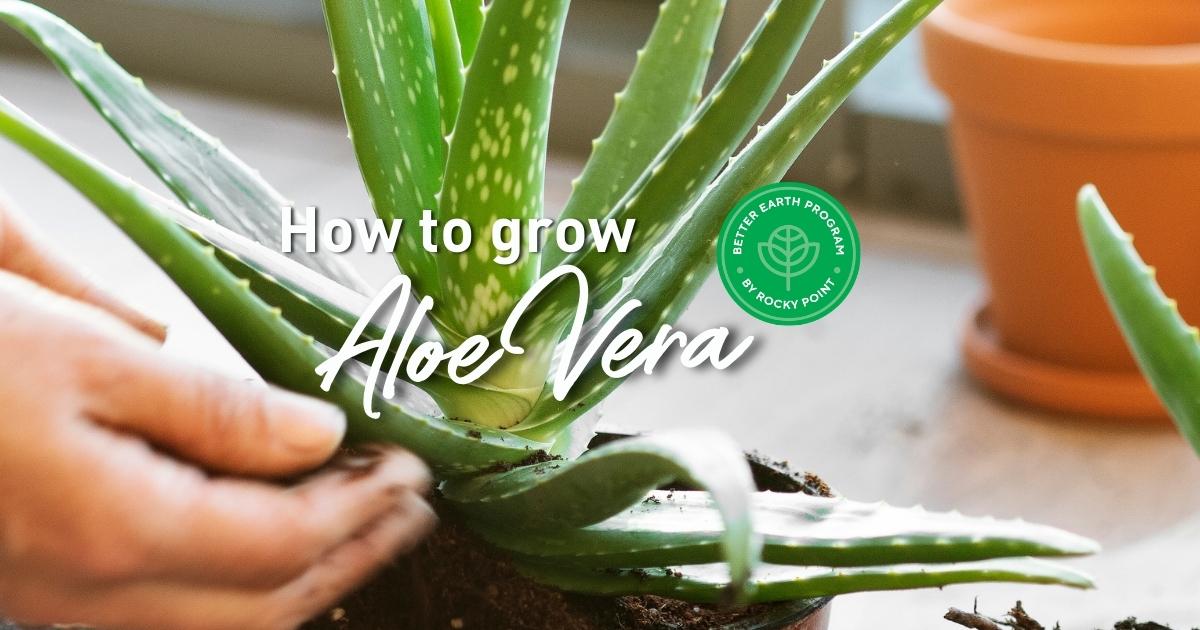Most of us remember from our childhood being told to rub the gel of the aloe vera plants succulent foliage onto sunburn or insect bites but there is a whole plethora of other reasons to grow aloe vera plants. They are an easy-to-grow drought-hardy succulent type plant that can be grown in the garden and even indoors in a pot.
Mature plants will grow to around half a metre tall. Aloe vera has fabulous architectural attractive spiky green foliage with white spots. They will also produce delightful orange flower spikes throughout summer.
How to grow to grow Aloe Vera:
Aloe vera’s preferred climatic zones are subtropical and tropical but you can successfully grow it in cold and warm temperate areas and arid zones providing you give your plants protection from frost.
Outdoors: In the garden, it is important to choose a location that receives full sun to semi-shaded conditions for your aloe vera plants. They thrive in sunlight but can also tolerate some shade.
It is crucial to ensure that the soil has excellent drainage to prevent water-logging, as aloe vera plants are susceptible to root rot. To improve the soil before planting, consider using a high-quality soil improver like Rocky Point ActivGrow Soil Improver. This will enhance the soil's structure, nutrient content, and water-holding capacity, promoting healthy growth for your aloe vera plants.
After planting, mulching with Rocky Point Sugar Cane Mulch will help retain moisture in the soil and suppress weed growth, creating an optimal environment for your plants to thrive.
Indoors: If you prefer to grow aloe vera inside your home, choose a location that receives ample bright light. Aloe vera plants require at least six hours of direct sunlight each day to maintain their health and vibrant foliage. Placing your pot near a sunny window or using artificial grow lights can provide the necessary light intensity. When planting aloe vera indoors, it is essential to use a specialised succulent and cacti mix like Rocky Point Succulents and Cacti mix. This specially formulated potting mix ensures proper drainage, preventing water accumulation that can lead to root rot.
Fertiliser: Aloe vera plants are not heavy feeders, but they can benefit from occasional fertilisation. Applying a balanced, water-soluble fertiliser specifically formulated for succulents once a month during the growing season can provide the necessary nutrients for healthy growth. Look for a fertiliser with a balanced NPK ratio (nitrogen, phosphorus, and potassium) to support overall plant health. Additionally, every 6 to 12 months, consider using a slow-release fertiliser to provide a steady supply of nutrients over time.
Water: Whether you are growing your aloe vera in the garden or a pot, it is important to remember that these plants have low water requirements. They are succulent plants, meaning they store water in their leaves and can tolerate periods of drought. It is crucial to allow the soil to dry out completely between watering to prevent overwatering, which can lead to root rot. A general rule of thumb is to water your aloe vera when the top inch of soil feels dry to the touch. During the growing season, you may need to water more frequently, but always ensure the soil is well-drained to avoid waterlogged conditions.
Uses: In addition to their ease of growth, aloe vera plants offer a multitude of benefits beyond their cooling and anti-bacterial properties. The gel extracted from aloe vera leaves has long been used as a natural remedy for various skin conditions. It is known to soothe sunburns, treat acne, relieve insect bites, and moisturise dry skin.
Moreover, aloe vera gel is now being incorporated into many cosmetic products, such as moisturisers, cleansers, and face masks, due to its hydrating and rejuvenating properties. By growing aloe vera plants, you not only add a beautiful and low-maintenance plant to your garden or indoor space but also gain access to a natural and versatile ingredient for your skincare routine.
_MEB.png?width=842&height=596&name=RP_HorizontalColour(R)_MEB.png)



